Disclosure: This article contains affiliate links. We may earn a commission from purchases at no extra cost to you, which helps our travel content.
It's 5:30 AM, and I'm already sweating through my linen shirt despite the 'winter' temperatures. The pre-dawn streets of Yangon are stirring to life as vendors set up their stalls with practiced efficiency, preparing for the morning rush. I've explored battlefields across Eastern Europe and ancient ruins along the Mediterranean, but I've found that to truly understand a culture's history, you need to understand what its people eat. Myanmar's complex past – from ancient kingdoms to colonial occupation to military rule – has created a cuisine that's as layered and nuanced as its history. Armed with my dog-eared travel journal and an appetite for discovery, I spent a week navigating Yangon's labyrinthine food scene, where the street vendors are the true keepers of culinary tradition. This isn't your standard food tour – it's a historical expedition conducted with chopsticks and small plastic stools.
The Historical Layers of Burmese Cuisine
Before diving into specific dishes, it's worth understanding the historical context that shaped Myanmar's food culture. Much like the country's archaeological sites (which I'll admit were my initial reason for visiting), Burmese cuisine is a study in cultural layers.
The foundation is indigenous cooking traditions using local ingredients like rice, fish paste, and an abundance of herbs. Layer upon that Chinese influences from centuries of trade, Indian flavors from both proximity and colonial connections, and Thai elements from neighboring kingdoms. The British colonial period (1824-1948) added yet another dimension, though less pronounced in street food than in upscale dining.
What fascinates me as someone who typically spends more time in museums than markets is how street food has remained relatively untouched by modernization. While Myanmar was largely isolated from international influence during military rule (1962-2011), traditional cooking methods and recipes were preserved like artifacts in a time capsule.
During my week in Yangon, I noticed how the city's colonial architecture – crumbling British administrative buildings juxtaposed with gilded pagodas – mirrors its culinary landscape: a complex historical narrative told through flavor rather than stone.

💡 Pro Tips
- Learn the phrase 'sa pyi bi la?' (Have you eaten?) as it's both a greeting and a way to start food conversations
- Eat where locals eat – if a street stall has a crowd of office workers or families, that's your signal
- Carry small denominations of kyat (local currency) as vendors rarely have change for large bills
Breakfast on the Streets: Mohinga and Morning Rituals
If you want to understand Yangon, start your day as locals do – with a steaming bowl of mohinga. This catfish and rice noodle soup is Myanmar's unofficial national dish, and the morning ritual surrounding it rivals any military precision I've documented at historical sites.
I found my favorite mohinga stall near the eastern entrance of Shwedagon Pagoda, where an elderly woman had been serving the same recipe for over 40 years. Her version featured a delicate balance of lemongrass, banana tree stem, and fish paste, topped with crispy fritters and a squeeze of lime. At 1500 kyat (less than £1), it's the definition of budget-friendly excellence.
The ritual begins early – by 6:00 AM, plastic stools are filled with everyone from monks to businessmen. There's a beautiful democracy to street food here; everyone eats the same dishes regardless of social status. I'd arrive just after sunrise, when the golden light makes even the most humble stall look magical, and the heat hasn't yet reached its peak.
While mohinga is the headliner, don't miss e kya kway (Burmese donuts) dipped in sweet tea, or nan bya (Burmese flatbread) served with yellow split pea dip. I tracked my morning food discoveries in my travel journal, which has become something of a culinary archaeological record of my travels.
A practical note: bring your own reusable chopsticks if you're environmentally conscious. While bamboo disposables are common, reducing waste is always worthwhile, particularly in a country still developing its waste management systems.
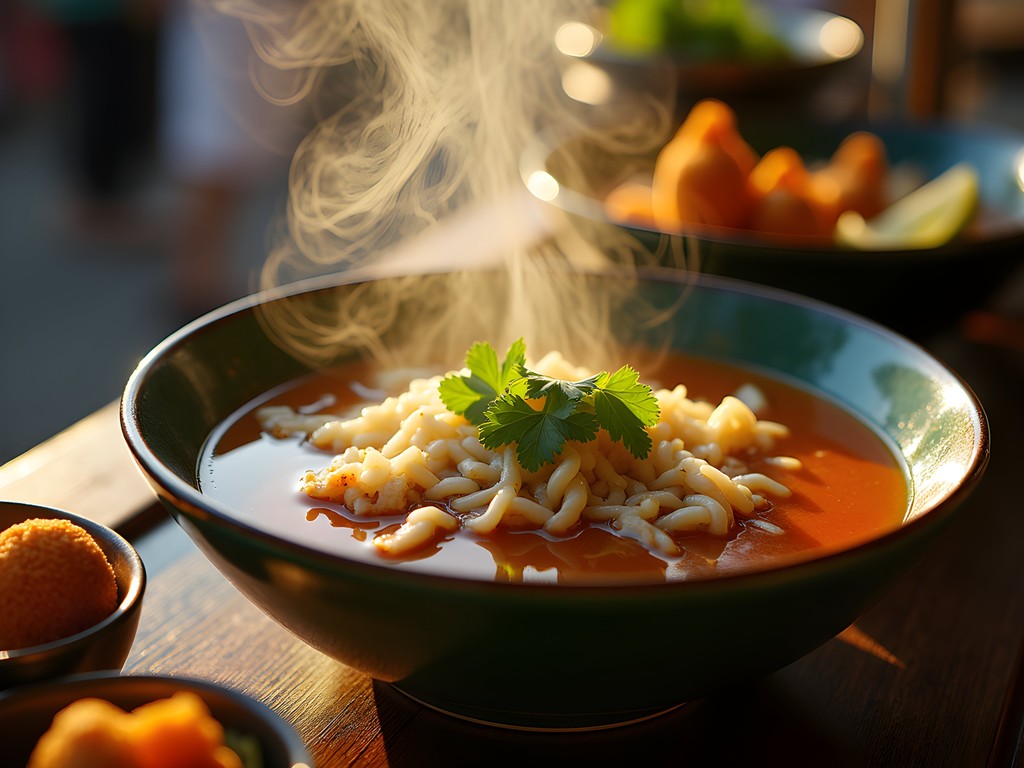
💡 Pro Tips
- Eat mohinga between 6-8 AM for the freshest experience – stalls often sell out by mid-morning
- Watch for the mohinga vendors who make their own rice noodles – they're usually superior
- Don't be shy about adding condiments – the chili, lime, and coriander are meant to be customized to your taste
Navigating the 19th Street BBQ Scene in Chinatown
If breakfast in Yangon is about ritual, dinner on 19th Street in Chinatown is pure controlled chaos – and I mean that as the highest compliment. This narrow thoroughfare transforms each evening into what locals call 'BBQ Street,' a smoky, bustling corridor that reminds me of ancient market streets I've documented across North Africa and the Mediterranean.
The concept is brilliantly simple: select skewers of raw ingredients from coolers (everything from river prawns to okra to marinated pork), hand them to the grill masters, and wait with a cold Myanmar beer while your selections sizzle over charcoal. The smoke carries traces of garlic, fish sauce, and spices that would have been traded along the ancient silk routes.
What fascinated me from a historical perspective was how 19th Street represents the Chinese migration that shaped Yangon's development in the late 19th century. Many vendors are descendants of Hokkien and Cantonese immigrants who arrived during British colonial rule, creating a cuisine that's neither purely Chinese nor Burmese but something uniquely Yangon.
I spent three evenings on plastic stools here, working my way through different stalls and combinations. My top discovery was a place about halfway down the street where an elderly couple grilled the most remarkable nga htamin (fish cake) I've ever tasted – flaky white fish with lemongrass and chili, charred perfectly over flames.
The communal dining experience – sharing tables with locals and travelers alike – creates the kind of authentic cultural exchange that no museum or historical site can replicate. History isn't just in monuments; it's in the way people gather, eat, and share stories.

💡 Pro Tips
- Arrive around 6:00 PM to get a good table – by 7:30 PM the street is packed
- Look for stalls where ingredients are kept on ice and turnover is high
- Budget around 10,000-15,000 kyat (£5-7) for a substantial meal with drinks
Tea Culture and Colonial Echoes
My background in architectural preservation always draws me to spaces where history and daily life intersect, which is why Yangon's tea shops fascinated me almost as much as its street food. These institutions – part café, part community center – are where Burmese tea culture thrives despite (or perhaps because of) British colonial influence.
Unlike the formal afternoon tea traditions exported by the British Empire, Yangon's tea shops are democratic, lively spaces. The sweet, milky Burmese tea (laphet yay) bears only a passing resemblance to its English cousin, infused instead with condensed milk and served in small glass cups that you'll see clutched in hands across the city at all hours.
I spent many afternoons at Lucky Seven Tea Shop near Sule Pagoda, where the colonial-era ceiling fans still spin lazily overhead, moving the humid air while patrons debate politics, business, and football. The walls, yellowed from decades of cooking smoke and cigarettes, could tell as many stories as any museum exhibit I've documented.
What makes these tea shops relevant to street food culture is the array of small dishes that accompany the tea – from samosas and palata (flaky flatbread with curry dipping sauce) to mont lin ma yar (quail egg pancake balls). Each tea shop has its specialties, passed down through generations.
I found myself tracking tea shop visits in my travel notebook, which proved invaluable during unexpected monsoon showers. The waterproof pages protected my notes on everything from the best tea shop samosas to conversations with locals about how these spaces served as meeting points for pro-democracy activists during military rule – another layer of history embedded in everyday eating spaces.
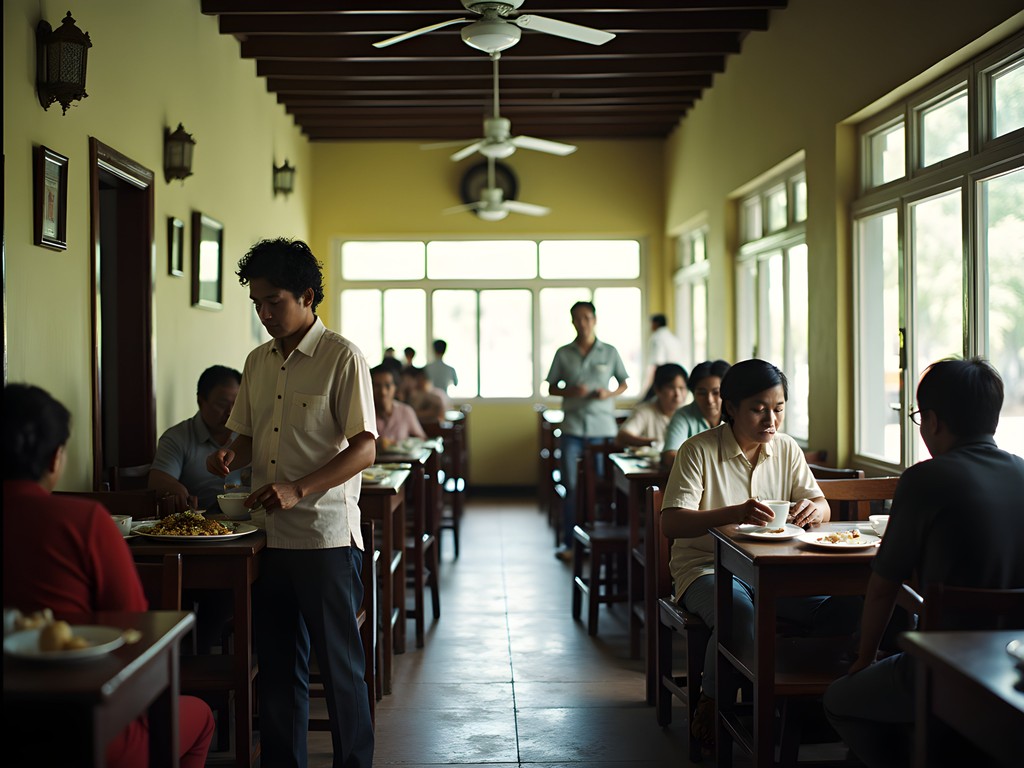
💡 Pro Tips
- Visit tea shops between 3-5 PM to experience the afternoon social scene
- Order 'laphet yay cho' for sweet milky tea or 'laphet yay gyaw' for plain black tea
- Look for tea shops with the most diverse clientele – they typically have the best food and authentic atmosphere
Bogyoke Aung San Market: The Strategic Hub of Flavors
If military history has taught me anything, it's the importance of strategic locations. In Yangon's culinary landscape, Bogyoke Aung San Market (formerly Scott Market during colonial times) serves as the central command for food culture – a sprawling complex where ingredients, prepared foods, and cultural exchange have converged since 1926.
While tourists typically visit for souvenirs and longyi (traditional Burmese clothing), the market's true value for food enthusiasts lies in its peripheral food stalls and the surrounding streets. This is where I found some of the most remarkable street food in Yangon, particularly in the narrow alleys extending from the main building.
The northeastern corner houses vendors selling nan gyi thoke (thick rice noodle salad) that rivals any pasta dish I've had in Mediterranean countries. The preparation is hypnotic – noodles tossed with chicken curry, chickpea flour, fish sauce, and crispy garnishes in large metal bowls with practiced hand movements that haven't changed in generations.
Nearby, I discovered elderly women preparing mont di (rice noodles in fish soup), a dish that originates from Mon State but has become a Yangon staple. What struck me was how these vendors preserve regional dishes from across Myanmar, making the market a living archive of the country's diverse culinary traditions.
As someone who typically documents historical artifacts, I found myself instead photographing the hands of these vendors – many weathered with decades of food preparation, each movement a piece of intangible cultural heritage more valuable than any museum piece.
The market's colonial architecture provides a fitting backdrop – British structural design now filled with the sights, sounds and smells of Myanmar. It's a physical manifestation of how cultures adapt and transform colonial impositions into something uniquely their own.
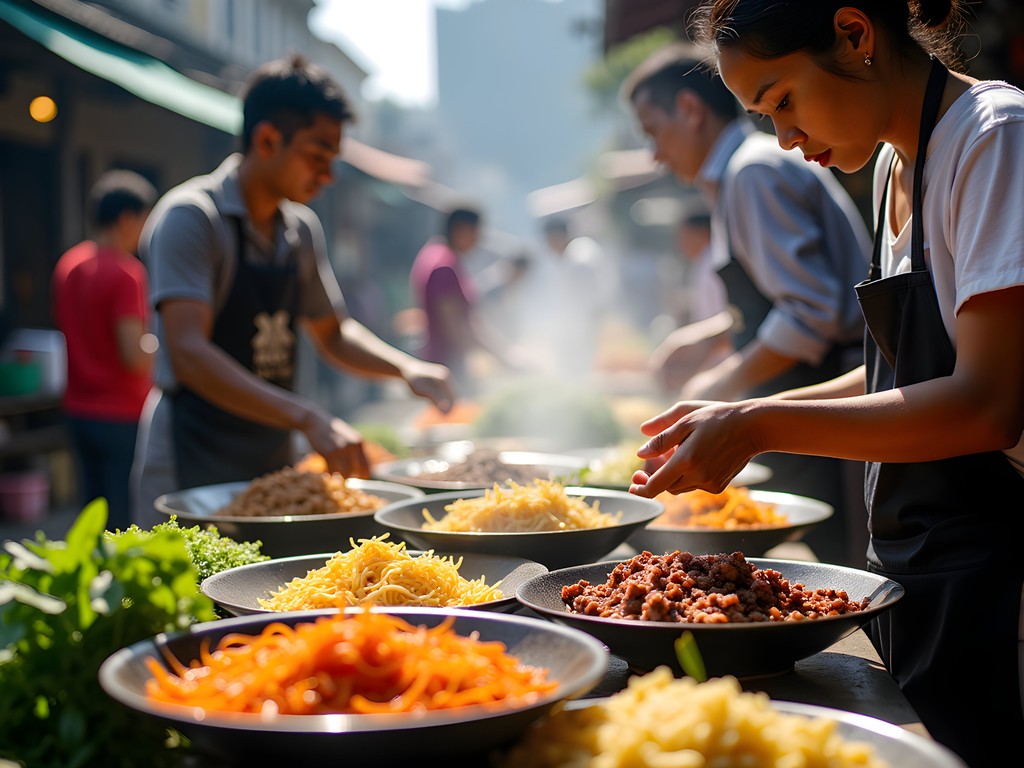
💡 Pro Tips
- Visit between 10 AM-2 PM when food stalls are in full swing but before afternoon crowds
- Follow office workers during lunch hour – they know which stalls offer the best value
- Bring small change and be prepared to eat standing up at some of the peripheral stalls
Night Markets and the Modern Evolution
My final exploration took me to Yangon's night markets, where I witnessed the evolution of street food culture in real-time. While traditional dishes remain the foundation, younger vendors are creating fusion offerings that reflect Myanmar's gradual reopening to the world.
The Strand Road Night Market, stretching along the Yangon River, transforms a daytime thoroughfare into a pedestrian food haven after 5 PM. Unlike the historical tea shops or morning mohinga stalls, these markets showcase how Yangon's food scene is cautiously embracing change while honoring tradition.
I was particularly drawn to vendors experimenting with laphet thoke (tea leaf salad) – Myanmar's most distinctive culinary export. Traditionally a mix of fermented tea leaves, nuts, seeds, and garnishes, younger vendors now offer versions with added avocado, crispy rice noodles, or even cheese – adaptations that would have been unthinkable a decade ago.
What makes these markets fascinating from a historical perspective is observing which elements of tradition remain non-negotiable and which are open to innovation. The fermentation process for tea leaves, for instance, remains steadfastly traditional, while accompaniments and presentations evolve.
I spent my final evening in Yangon at Chinatown's night market on Maha Bandula Street, where I found a vendor in his twenties serving mohinga with an unexpected twist – a sous-vide egg rather than the traditional hard-boiled one. When I asked about this modern technique, he explained he'd learned it while working in Singapore but returned to Yangon to apply new methods to his grandmother's recipes.
This conversation, scribbled in my travel journal under the glow of bare light bulbs, encapsulated what makes Yangon's street food scene so compelling – it's simultaneously a preservation of history and a cautious embrace of the future, much like the country itself.

💡 Pro Tips
- Visit night markets after 7 PM when they're fully operational and temperatures have dropped
- Look for vendors who bridge traditional and modern – they often create the most interesting dishes
- Try variations of familiar dishes you've had elsewhere to appreciate the evolution of flavors
Final Thoughts
As I packed my bags on my final morning in Yangon, I realized that my street food safari had given me insights into Myanmar's complex history that no museum or historical site could have provided. The resilience of culinary traditions through colonial occupation, military rule, and gradual reopening tells a story of cultural preservation more powerful than any artifact behind glass. What struck me most was how Yangon's street food vendors serve as unwitting historians – preserving techniques, flavors, and communal eating traditions that connect modern Myanmar to its pre-colonial past. For travelers willing to venture beyond guidebook recommendations and embrace plastic stools, mysterious broths, and conversational gestures over language barriers, Yangon offers not just meals but edible history lessons. So before you plot your course to Myanmar's archaeological wonders, consider beginning with a bowl of mohinga at dawn – sometimes the most profound historical experiences come one bite at a time.
✨ Key Takeaways
- Yangon's street food provides deeper insights into Myanmar's cultural history than many traditional tourist sites
- Morning mohinga stalls, tea shops, and night markets each represent different historical periods and influences
- Budget travelers can experience the full spectrum of Burmese cuisine for under £5-7 per day
- The evolution of traditional dishes reveals Myanmar's cautious balancing of preservation and innovation
- Food vendors serve as unwitting cultural historians, preserving techniques and traditions through generations
📋 Practical Information
Best Time to Visit
November to February (dry season with cooler temperatures)
Budget Estimate
£15-25 per day for food, including 3 meals and snacks
Recommended Duration
5-7 days to fully explore Yangon's diverse food neighborhoods
Difficulty Level
Intermediate (Language Barriers And Hygiene Considerations Require Some Travel Experience)

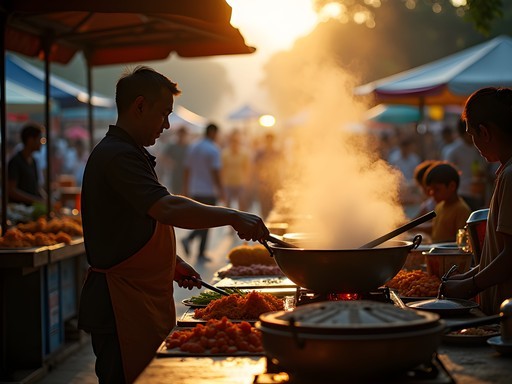

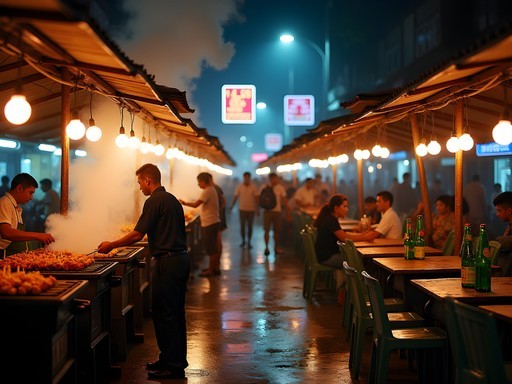
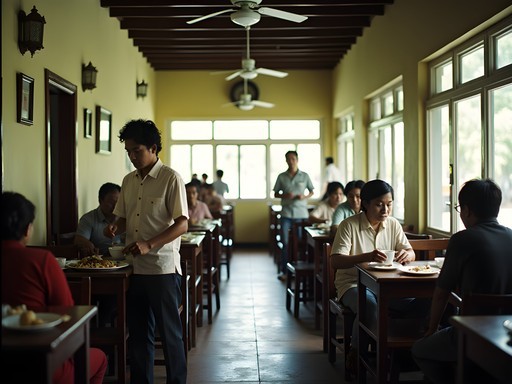

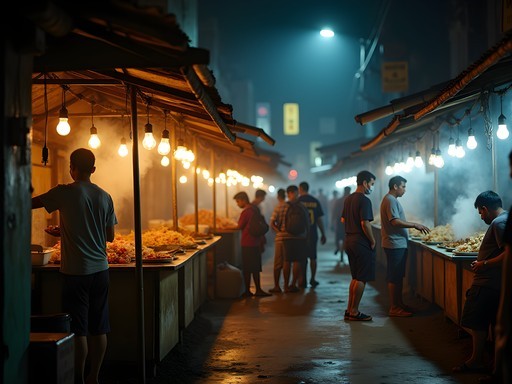






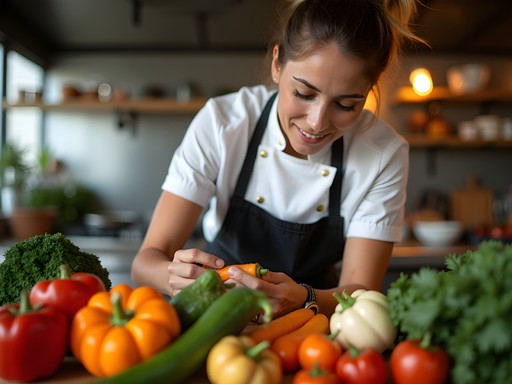

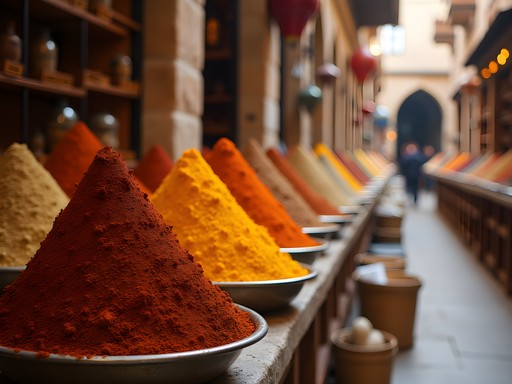
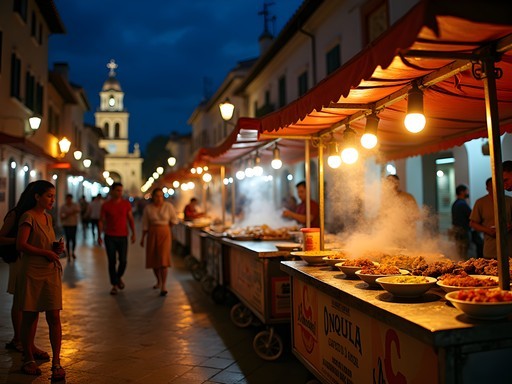
Comments
foodie_explorer
If anyone's heading to Yangon, don't miss the fermented tea leaf salad (lahpet thoke)! It wasn't mentioned in the post but it's absolutely incredible - tangy, crunchy, and unlike anything else you've tried. The best one I had was at a small place near Bogyoke Market.
Donald Andersson
Great addition! You're right, the lahpet thoke is fantastic. I should have included it - that unique fermented flavor with all the crunchy toppings is so distinctive to Myanmar cuisine.
backpack_wanderer
Is the 19th Street BBQ area open late? Looking for dinner options when I visit.
Donald Andersson
Yes! 19th Street really comes alive after dark - most stalls are open until at least 10pm, with some going until midnight. It's actually best experienced in the evening when it's cooled down a bit.
myanmarfan
Your photos of the mohinga brought back so many memories! Best breakfast in the world!
Casey Andersson
Donald, your description of the tea culture took me right back to my own experience in Yangon! I spent hours in those colonial-era tea houses watching the world go by. There's something magical about how the simple act of drinking tea connects you to both Myanmar's British colonial past and its vibrant present. I found the contrast between the traditional tea houses and the newer, Instagram-friendly cafes fascinating - like watching the city evolve in real time. Did you make it to Rangoon Tea House? It's pricier but offers an interesting upscale take on traditional flavors. Your 5:30am start was braver than me though - I never quite managed to beat the heat by getting up that early!
Donald Andersson
I did make it to Rangoon Tea House! Definitely a more polished experience, but I enjoyed seeing how traditional flavors are being preserved while catering to changing tastes. The 5:30am starts were brutal, but the light for photography and the morning market energy made it worthwhile. Next time try it - the streets have a completely different character before the heat sets in.
travelbug442
Those morning markets sound amazing! Adding this to my bucket list.
greenchamp
Great post! I'm heading to Yangon next month. How safe is it to eat from street vendors? Any stalls I should definitely avoid or look for?
Casey Andersson
I was in Yangon earlier this year! Street food is generally safe if you follow the usual rules - look for busy stalls with high turnover and locals eating there. The mohinga stands Donald mentioned near Sule Pagoda were fantastic and perfectly safe. I'd recommend bringing a water bottle though - saves buying plastic bottles and filters the water too.
Donald Andersson
Thanks for jumping in, Casey! @greenchamp - I'd add that the 19th Street BBQ area I mentioned is very tourist-friendly. Look for places where they're cooking food fresh in front of you. The tea shops are also very safe bets. Enjoy your trip!
greenchamp
Thanks both! Really helpful. Can't wait to try the mohinga!
Jean Wells
Donald, your analysis of the historical layers in Burmese cuisine is spot on. I spent three weeks researching food history across Myanmar last year, and Yangon's 19th Street perfectly encapsulates that cultural fusion. For anyone planning a visit, I recommend arriving around 6pm to watch the BBQ stalls set up - it's fascinating to see how they prepare those marinades. The grilled okra was surprisingly my favorite item. One tip: the stalls in the middle of the street often have better quality than those at either end. Also, bring small bills as they rarely have change for larger notes.
Donald Andersson
Great insight about the middle stalls, Jean! I found the same thing. And yes, those marinades are fascinating to watch being prepared - so many layers of flavor being built.
luckyphotographer
Thanks for the tips! Will definitely check out 19th Street and arrive early to see the setup.
luckyphotographer
Going to Yangon next month! How safe did you feel wandering around the street food stalls early morning? Any areas to avoid?
Donald Andersson
I felt very safe overall! The morning markets are busy with locals and everyone was friendly. Just use normal travel precautions. The area around Sule Pagoda and Chinatown are well-populated and fine for solo exploring.
Jean Wells
I'll add that as a solo female traveler, I found Yangon quite safe for street food exploration. Bring a pocket flashlight if you're heading out pre-dawn like Donald did - some of those side streets have minimal lighting. The vendors near Bogyoke Market were particularly welcoming.
journeyphotographer
That Mohinga for breakfast changed my life when I visited last year! I still dream about that fish broth. Did you try the laphet thoke (tea leaf salad)? The fermented tea leaves with crunchy nuts and beans was such an unexpected combo but totally addictive.
Donald Andersson
The laphet thoke was incredible! I loved that tangy, crunchy, slightly bitter combination. There's a vendor near Bogyoke Market who makes it with extra peanuts - game changer!
journeyphotographer
Thanks for the tip! Adding that vendor to my list for next time. Your photos really captured the vibrancy of those markets too!
Sean James
Donald, excellent coverage of Yangon's street food ecosystem. Your section on 19th Street BBQ brought back memories of my last business trip there. After meetings wrapped up, my local colleagues insisted we try skewers from a specific vendor they swore had the best marinade in town. The contrast between the corporate conference rooms and sitting on plastic stools, cold Myanmar beer in hand, watching skewers sizzle over charcoal was striking. One tip for business travelers: many street food areas are easily accessible from downtown hotels, and make for much more memorable client dinners than hotel restaurants. Just bring extra business cards - you'll make friends quickly when sharing dishes!
Donald Andersson
Great point about business dinners, Sean! Nothing breaks down barriers like sharing street food. And yes, those Myanmar beers are the perfect complement to the BBQ skewers!
springadventurer
YES!! Mohinga for breakfast changed my life when I visited! That rich fish broth with the crunchy split pea fritters on top... heaven! And the tea shops with those tiny plastic chairs where you sit for hours watching the world go by. Your post captures the essence of Yangon's food scene perfectly. Can't wait to go back someday!
Venture X
Premium card with 2X miles, $300 travel credit, Priority Pass